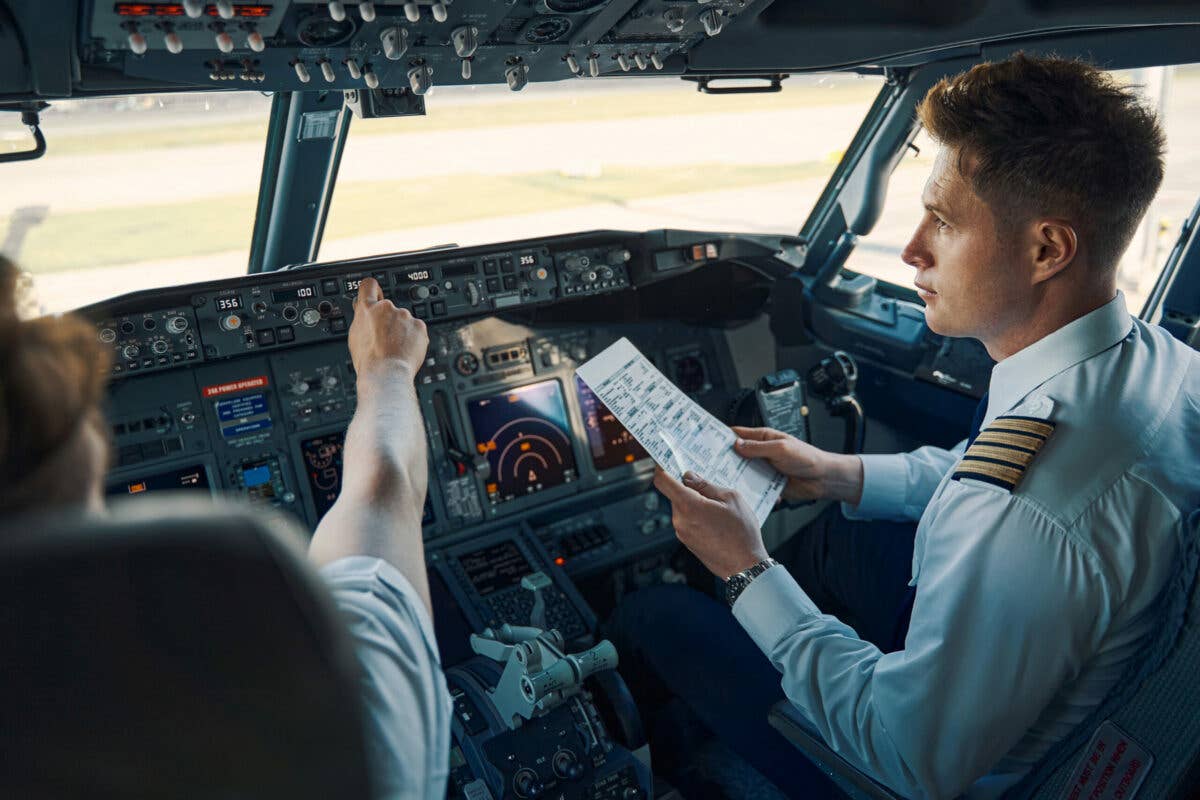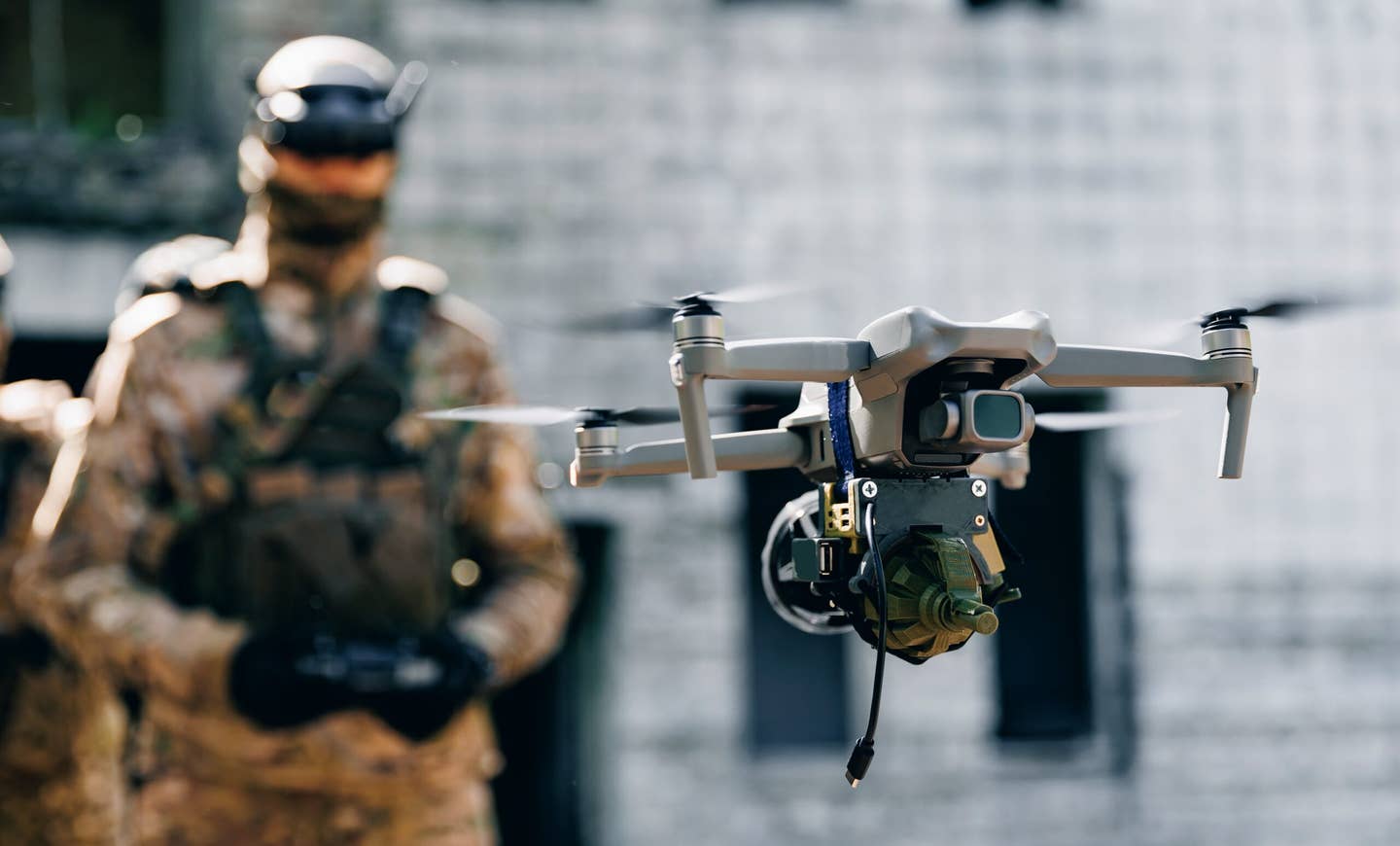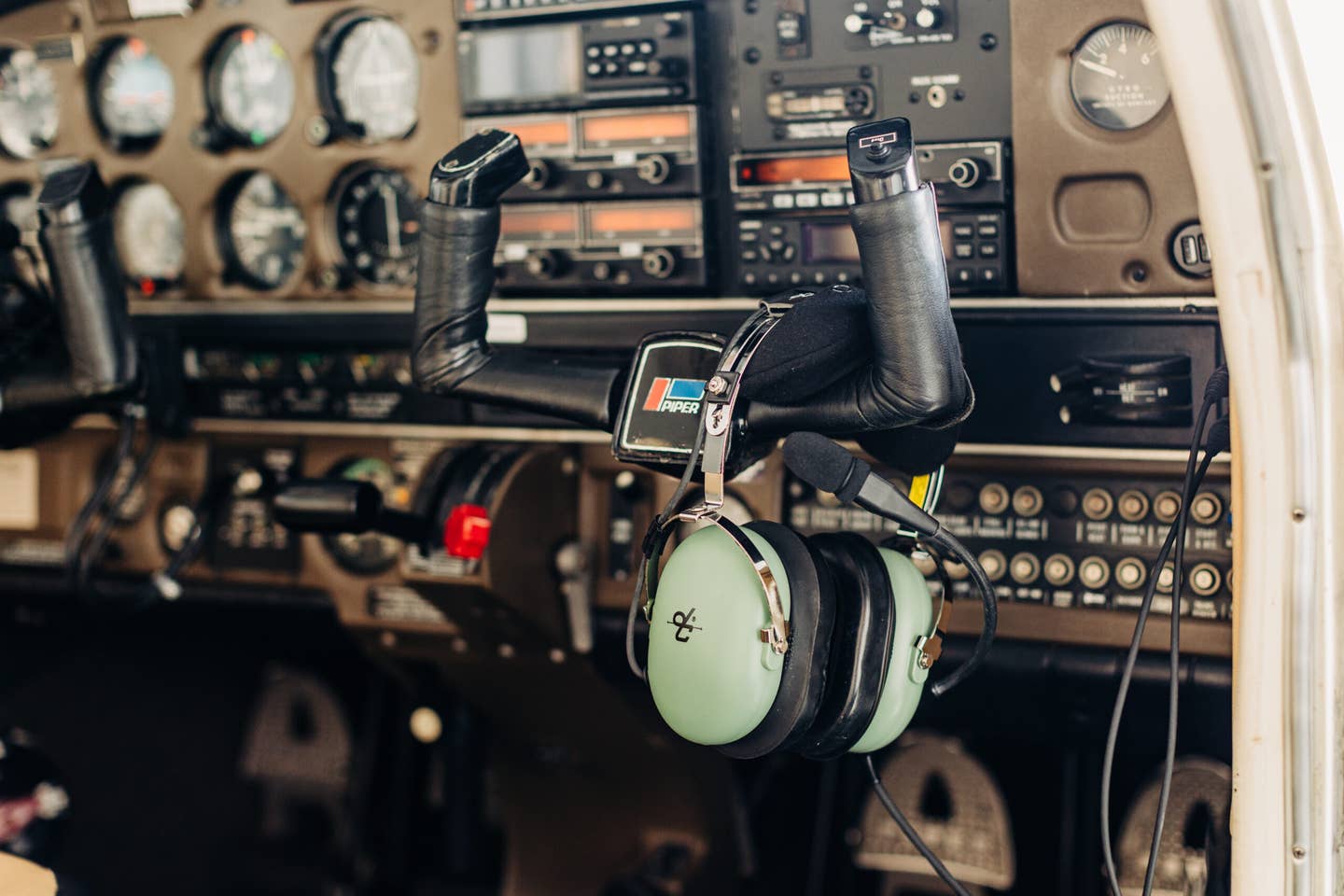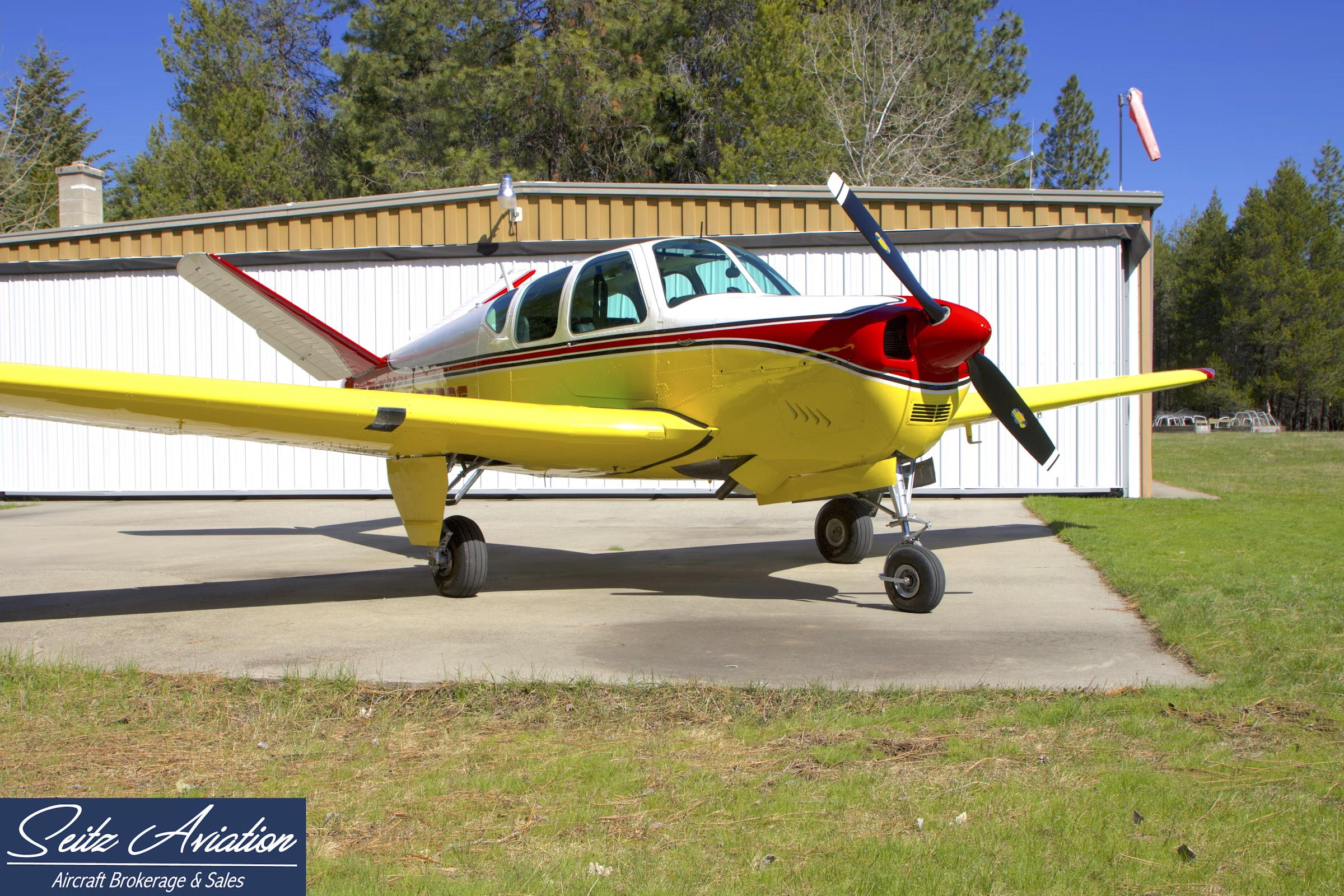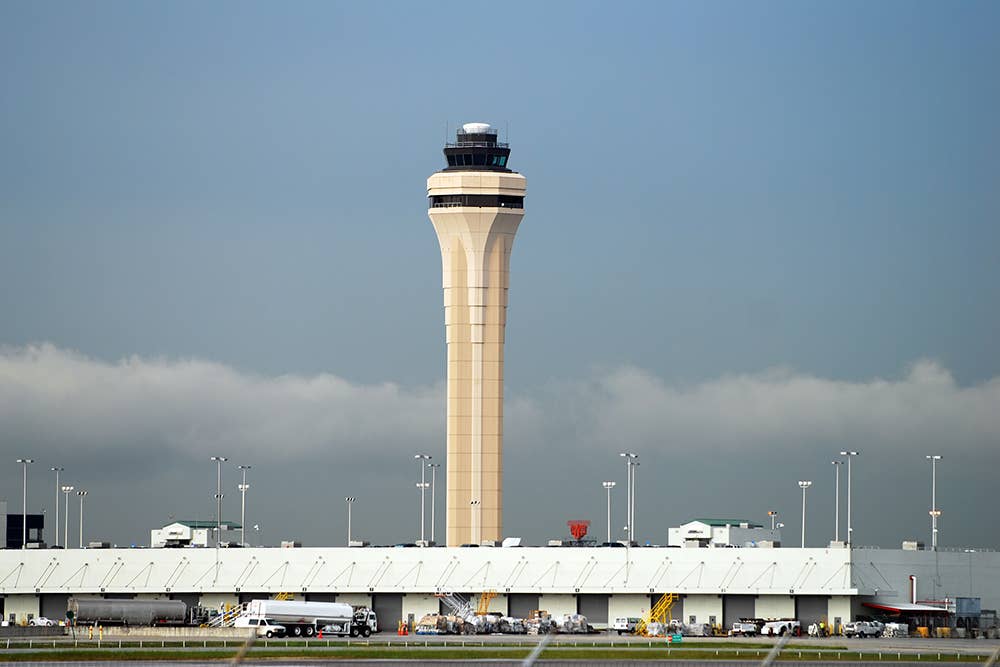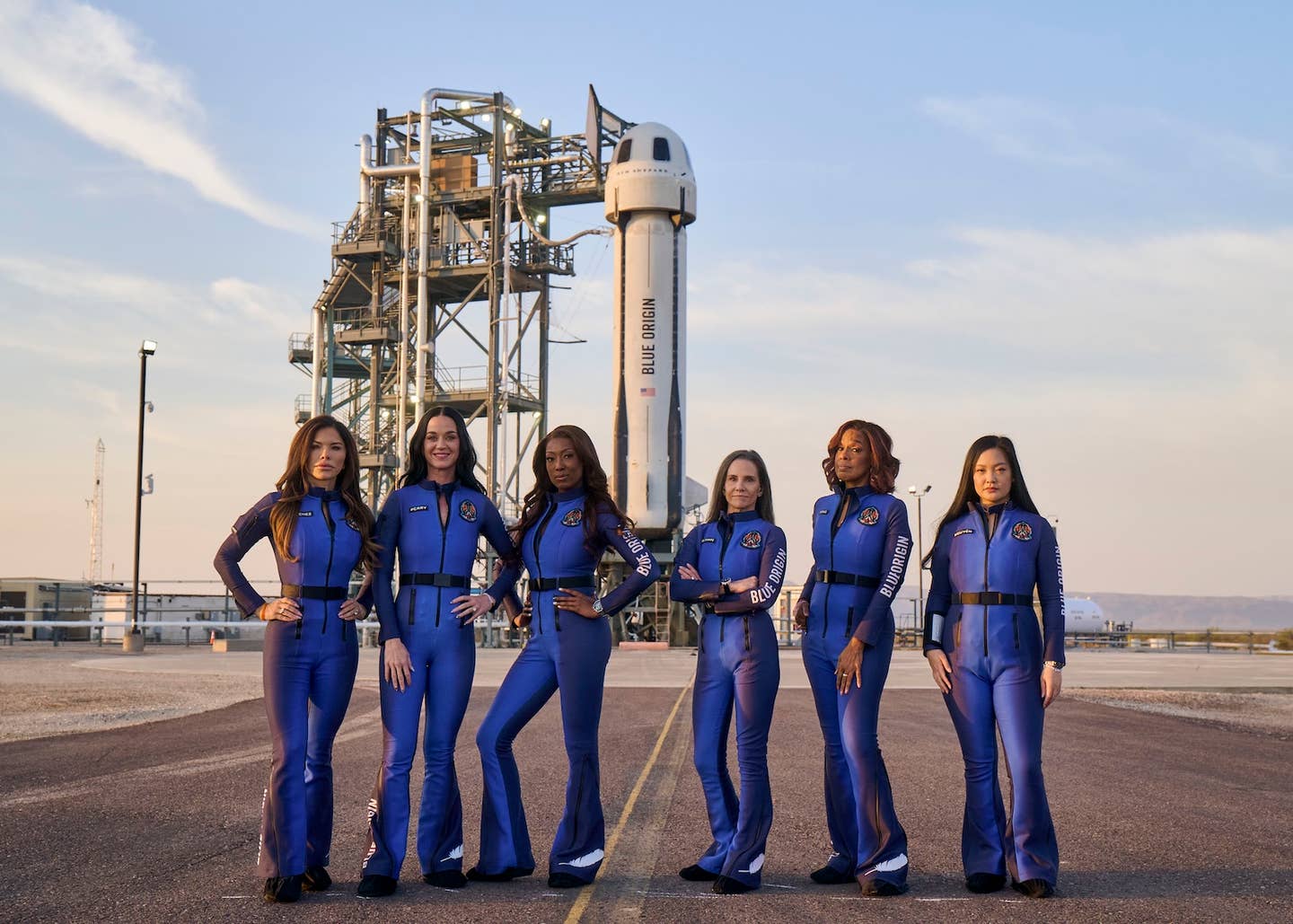Joby Eyes Regional Service With Liquid Hydrogen-Powered Air Taxi
The company has previously discussed its plans for intracity air taxi routes using its flagship, battery-electric model.
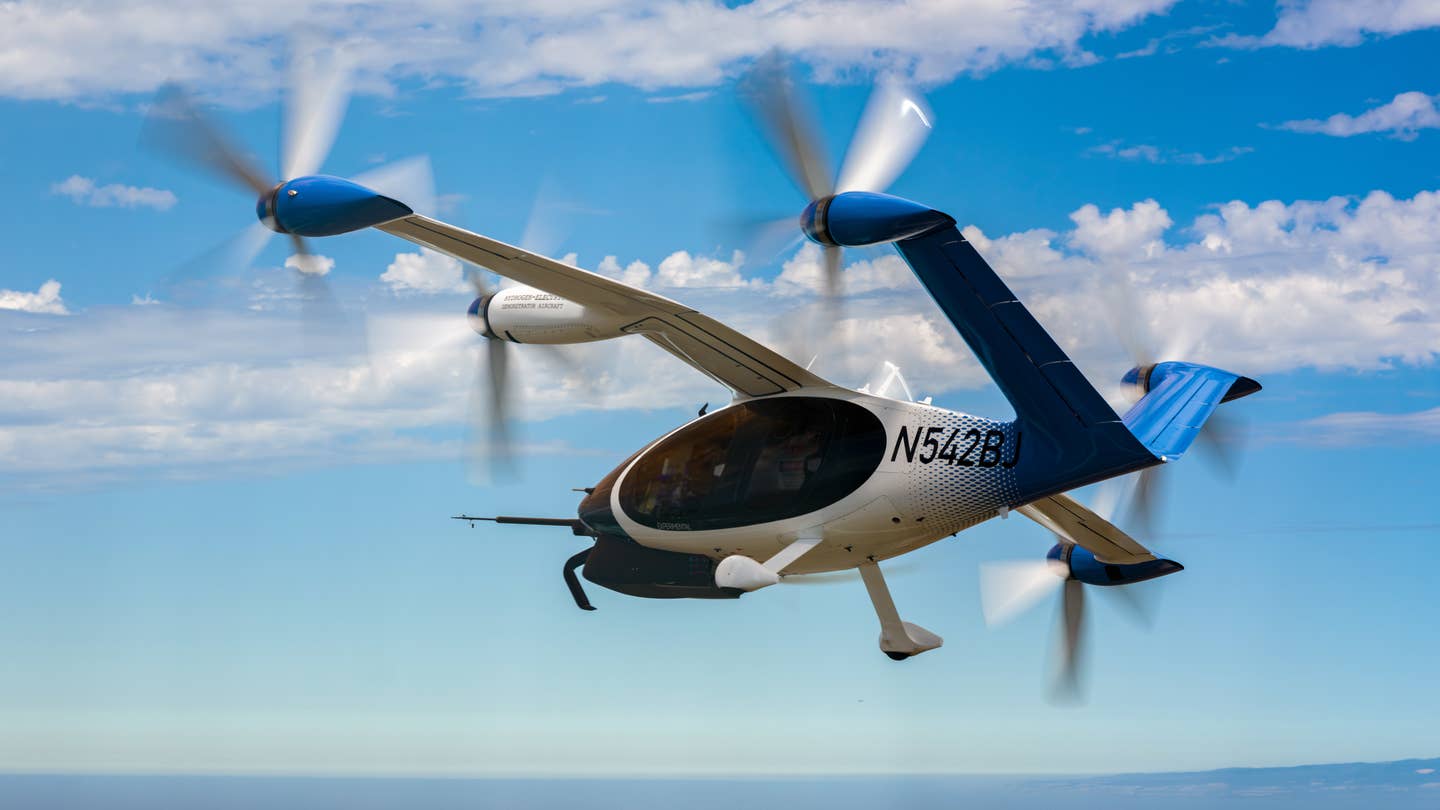
Joby flew a hydrogen-electric air taxi, built using components from subsidiary H2FLY, on a debut, 532-mile flight on June 24. [Courtesy: Joby Aviation]
Electric vertical takeoff and landing (eVTOL) aircraft company Joby Aviation, which is developing a four-passenger air taxi for intracity trips, will look to fly city-to-city using a hydrogen-powered version of its flagship design.
On June 24, the firm’s “first-of-its-kind” hydrogen-electric, vertical takeoff and landing (hVTOL) demonstrator completed a 532 sm (462 nm) flight—about the distance between San Francisco and San Diego—above Marina, California, home to the Joby’s test facility and pilot production line. The aircraft landed with more than 10 percent of its hydrogen fuel remaining, with water the only byproduct of the flight.
Joby believes the test, which included a vertical take off and landing, represented the first forward flight for a liquid hydrogen-powered eVTOL aircraft. The company said hydrogen is a key piece of its future plans.
“We’re excited to now be building a technology stack that could redefine regional travel using hydrogen-electric aircraft,” said JoeBen Bevirt, founder and CEO of Joby. “Imagine being able to fly from San Francisco to San Diego, Boston to Baltimore, or Nashville to New Orleans, without the need to go to an airport and with no emissions except water. That world is closer than ever.”
The development signals a shift in Joby’s stated business philosophy, which before Thursday was centered around flying urban air mobility (UAM) routes within cities.
In a blog post penned by Bevirt and Raffaele Russo, business manager for new technologies at Joby, the company’s top brass said regional air mobility (RAM) is also on the agenda. The firm has alluded to a regional service before, but Thursday’s developments appear to confirm that one is in the works.
“Although the specific energy of batteries is improving, their weight will continue to limit the application of electric aircraft to short-distance travel,” the blog post reads. “To serve regional markets, we plan to use hydrogen to increase the potential range and payload of electric aircraft.”
Joby’s hydrogen-electric program builds on the technology developed by its subsidiary H2FLY, acquired in secret in 2021.
The manufacturer built the hydrogen-electric demonstrator by modifying one of its battery-electric aircraft, which has already flown more than 25,000 miles, with a hydrogen fuel tank capable of storing up to 40 kilograms of liquid, supercooled hydrogen. It includes a smaller battery cell, which provides extra power during takeoff and landing.
The design employs the same airframe and overall architecture as its battery-electric counterpart. It will use the same takeoff and landing sites and operations team, as well as ElevateOS—a proprietary, Uber-like software suite unveiled in June.
ElevateOS comprises a pilot app, rider app, operations suite, and matching system that connects riders with aircraft based on departure time, arrival time, and location. It includes an integration with the Uber app, allowing Uber customers to book Joby flights and vice versa.
The hydrogen-powered model also includes the H2F-175 hydrogen fuel cell, built by H2FLY, which produces electricity and heat with water as the sole byproduct. The fuel cell powers the aircraft’s six electric motors, which feed into tilting propellers that assist in both hover and forward flight, and charges the batteries while they are deactivated in cruise mode.
The technology was deployed about one year ago during a milestone H2FLY flight, which Joby claims was the first crewed flight of a hydrogen-electric aircraft with a runway takeoff.
According to Joby’s estimate, the hydrogen-electric model will have a greater payload than a battery-electric design or an aircraft using an equivalent amount of jet fuel.
Bevirt is also bullish on hydrogen production, pointing to the U.S. Department of Energy’s $7 billion investment in clean “hydrogen hubs.” He noted that hydrogen can be produced using a variety of low- or zero-emission sources such as wind or water power, which could help the aviation industry meet commitments to eliminate emissions by 2050.
“We recognize that broadly commercializing hydrogen will require doing the hard miles on regulation and infrastructure, along with fuel storage and distribution, but we have demonstrated that regional hydrogen-electric flight is possible today,” Bevirt and Russo wrote in Thursday’s blog post.
Bevirt said the bulk of the work Joby has done to certify its flagship, battery-electric air taxi will carry over to commercializing a hydrogen-electric variant. The company’s hydrogen-electric activities are supported by Agility Prime, the vertical lift technology division of the U.S. Air Force innovation arm, AFWERX.
“Agility Prime has been very supportive of hydrogen-powered aircraft development and testing as it aligns with the program’s goals to advance transformative vertical lift technologies and broader Department of Defense operational energy goals of energy substitution and diversification, and energy demand reduction,” said Jacob Wilson, acting branch chief of Agility Prime.
Joby is also collaborating with AFWERX’s Autonomy Prime division, which, as the name implies, develops self-flying aircraft.
The company in June acquired autonomous flight company Xwing for an undisclosed fee and intends to build a self-flying version of its flagship air taxi in the future, using Xwing’s Superpilot software. U.S. competitor Wisk Aero and Chinese eVTOL manufacturer EHang are among the handful of firms looking to fly autonomous air taxis at launch.
Joby aims to launch commercial operations with its flagship battery-electric air taxi in 2025, in partnership with Delta Air Lines. New York and Los Angeles are slated as the company’s first U.S. markets.
The aircraft is designed for a pilot to fly as many as four passengers on trips up to 100 sm (87 nm), cruising at 200 mph (174 knots). In the U.S., Joby will operate the model itself.
Like this story? We think you'll also like the Future of FLYING newsletter sent every Thursday afternoon. Sign up now.

Sign-up for newsletters & special offers!
Get the latest FLYING stories & special offers delivered directly to your inbox

